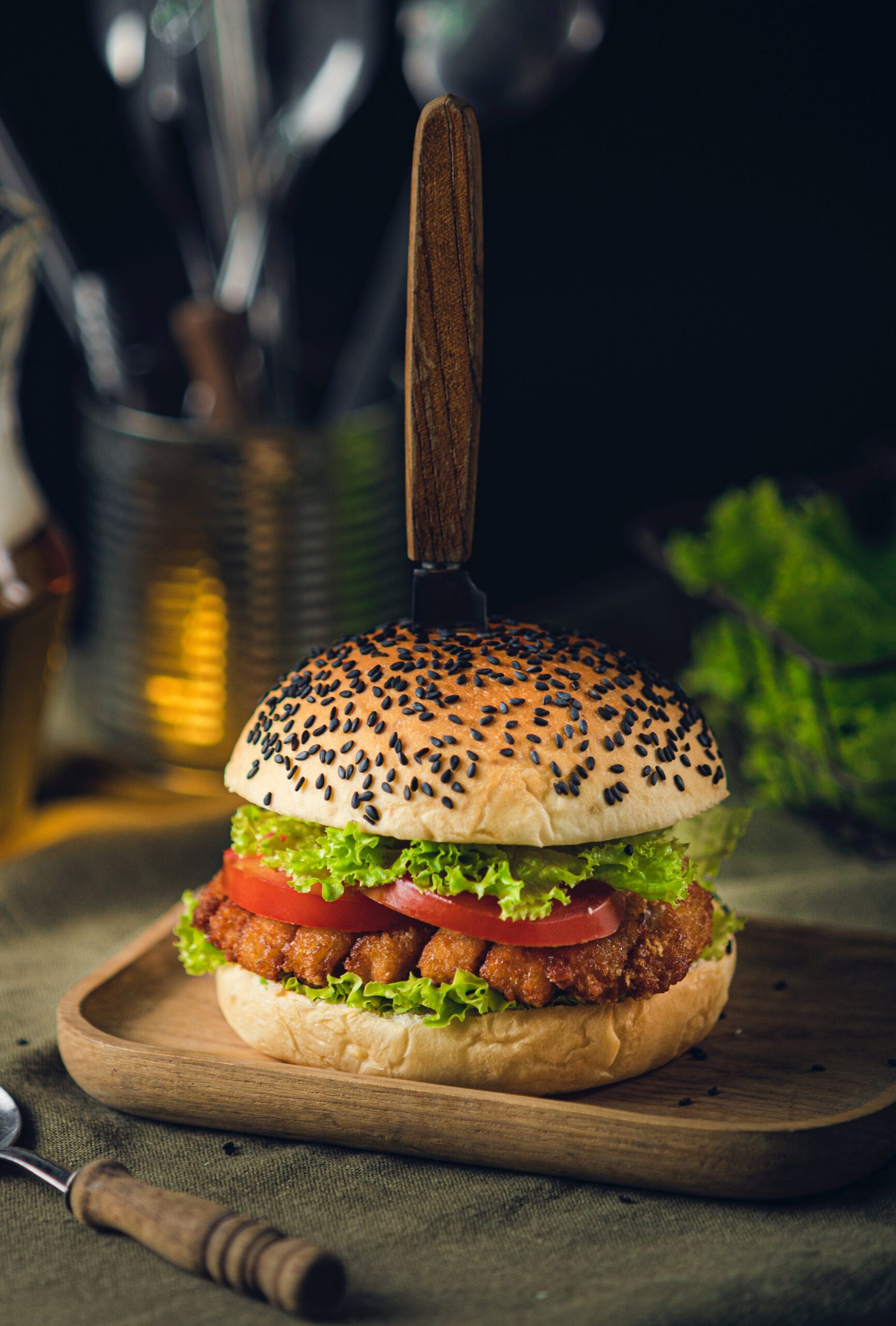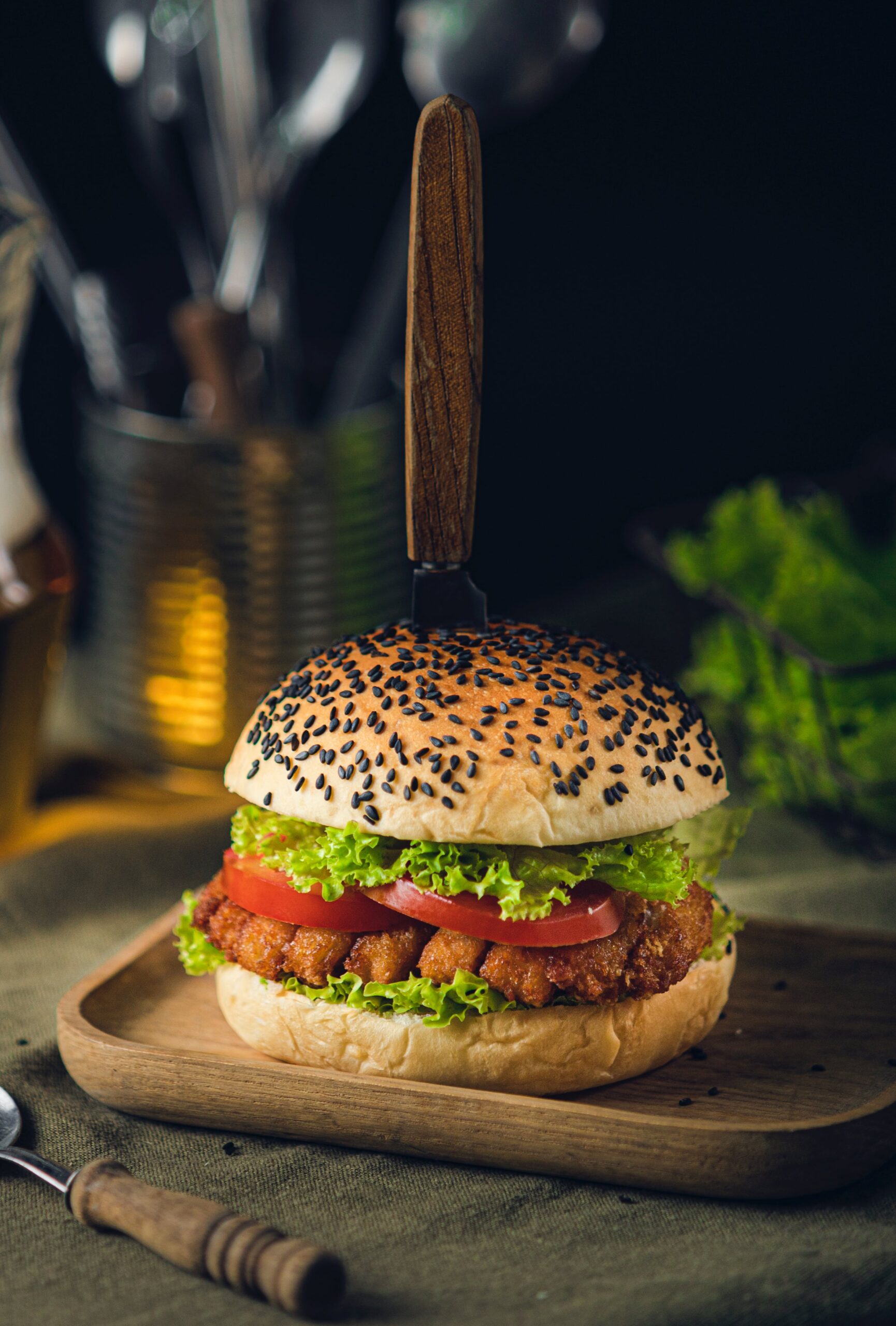Join Tastepan’s mindful cooking movement and embark on a fun and nutritious journey with your kids. Learn the art of preparing delicious meals that not only nourish their growing bodies but also stimulate their senses. With Tastepan’s collection of nutritious recipes, you can engage your little ones in the kitchen, teaching them about healthy eating while spending quality time together. Say goodbye to mealtime battles and hello to a joyful and wholesome dining experience. Let’s dive into the world of mindful cooking with kids and discover the joys of creating nutritious meals that bring families closer together.

Benefits of Mindful Cooking with Kids
Developing healthy eating habits
Mindful cooking with kids provides an excellent opportunity to cultivate healthy eating habits from an early age. By involving children in the cooking process, they become more aware of the ingredients used to prepare their meals. This awareness helps them make better choices when it comes to what they eat. They learn to appreciate fresh produce, whole grains, and the importance of reducing added sugars and refined oils in their diet. By understanding the impact of their choices, children can develop a lifelong commitment to nourishing their bodies with wholesome foods.
Bonding time with children
Cooking together creates an ideal environment for bonding with your children. It’s a chance to engage in conversations, share stories, and create lasting memories. As you work together to prepare meals, you have the opportunity to connect on a deeper level. Encourage open communication, ask your children about their day, and listen attentively. This shared experience will strengthen your relationship and create a sense of togetherness that will be cherished by both you and your child.
Teaching life skills
Cooking is a valuable life skill that everyone should possess. By involving kids in the cooking process, you are equipping them with essential skills they will carry with them throughout their lives. From measuring ingredients to following recipes, kids can develop their math skills and improve their understanding of measurements and fractions. They can also learn about scientific concepts through hands-on experiments and explore the rich diversity of cultures through international cuisine. Cooking with kids not only teaches them how to prepare nutritious meals, but also promotes independence, creativity, and problem-solving skills.
Creating a Safe and Engaging Environment
Choosing age-appropriate tasks
When cooking with kids, it’s important to assign them age-appropriate tasks. Younger children can help with simple tasks like stirring, pouring, or tearing herbs. Older children can handle more complex tasks like chopping vegetables or flipping pancakes. By giving them tasks that are suitable for their age and skill level, you ensure their safety and enable them to contribute effectively to the cooking process.
Emphasizing kitchen safety
Safety should always be a priority when cooking with kids. Teach them the importance of handling kitchen tools and equipment responsibly. Show them how to properly use knives, peelers, and other potentially dangerous utensils. Establish rules such as washing hands before cooking, wearing oven mitts when handling hot items, and turning off stove burners when not in use. By instilling good kitchen safety habits from an early age, you are ensuring a safe and enjoyable cooking experience for both you and your child.
Encouraging creativity
Mindful cooking with kids offers a wonderful opportunity for creativity. Encourage your children to explore their imagination in the kitchen by experimenting with different flavors, textures, and combinations of ingredients. Let them suggest new recipes or modifications to existing ones. By giving them the freedom to be creative, you are fostering their culinary skills and nurturing their ability to think outside the box. This creativity will not only make cooking more exciting, but also help them develop problem-solving and critical thinking skills that can be applied in other areas of their lives.

Choosing Nutritious Ingredients
Exploring fresh produce
One of the key aspects of mindful cooking with kids is emphasizing the use of fresh produce. Take your children to the local farmers market or involve them in planting and harvesting fruits and vegetables in your garden. Teach them about the benefits of consuming a variety of colorful fruits and vegetables that are packed with essential nutrients. Let them touch, smell, and taste different produce to develop their sensory awareness. By engaging them in the process of selecting and preparing fresh ingredients, you are nurturing their appreciation for wholesome foods and encouraging a lifelong habit of incorporating them into their diet.
Incorporating whole grains
When planning meals with kids, make a conscious effort to incorporate whole grains into their diet. Whole grains provide essential vitamins, minerals, and fiber that support overall health and well-being. Teach your children about the benefits of whole grains and involve them in choosing whole grain breads, pastas, and cereals. Encourage them to explore different types of grains like quinoa, brown rice, and oats. By integrating whole grains into their meals, you are instilling habits that will promote good health and provide long-lasting energy.
Reducing added sugars and refined oils
Mindful cooking with kids involves reducing the consumption of added sugars and refined oils. Educate your children about the detrimental effects of too much sugar and unhealthy fats on their bodies. Encourage them to read food labels and identify ingredients like high fructose corn syrup, artificial sweeteners, and hydrogenated oils. Teach them to find healthier alternatives like natural sweeteners and oils. By being mindful of the ingredients we use in our cooking, we can help our children develop an understanding of balanced nutrition and make choices that support their overall well-being.
Mindful Meal Planning
Involving kids in menu selection
Involve your kids in the meal planning process by allowing them to contribute to the menu selection. Ask them to suggest their favorite meals or ingredients they would like to try. This not only gives them a sense of ownership but also encourages them to try new foods and flavors. Incorporate their suggestions into the meal plan and make sure to include a balance of protein, carbohydrates, and vegetables. By involving them in the decision-making process, you are teaching them about nutrition and empowering them to make healthier choices.
Balancing nutrients and food groups
A well-balanced meal consists of a variety of nutrients from different food groups. Teach your children about the importance of including proteins, carbohydrates, healthy fats, and vegetables in each meal. Help them understand the role of each nutrient in their bodies and how they work together to support overall health. Involve them in creating balanced meals by including a protein source, whole grains, fruits or vegetables, and a healthy fat. By teaching them the principles of a balanced diet, you are imparting valuable knowledge that will guide them in making nutritious choices throughout their lives.
Adapting recipes to dietary needs
When cooking with kids, it’s important to consider any dietary restrictions or preferences they may have. Involve them in adapting recipes to meet their needs and preferences. If someone in the family has allergies or follows a specific diet, find creative ways to accommodate those requirements while still ensuring a tasty and nutritious meal for everyone. This adaptability not only creates inclusivity, but also teaches children to be mindful of different dietary needs and promotes empathy and understanding.

Promoting Mindfulness in the Kitchen
Practicing gratitude for food
Teach your children the importance of being grateful for the food they have and the effort involved in growing, preparing, and cooking it. Encourage them to express gratitude before each meal or snack. This simple act of gratitude cultivates mindfulness and appreciation for the nourishment that food provides. By practicing gratitude in the kitchen, you are instilling a sense of mindfulness that can extend to other areas of their lives.
Engaging the senses
Cooking involves engaging all of our senses. Encourage your children to use their senses of sight, smell, taste, touch, and even hearing when preparing and cooking meals. Allow them to observe the vibrant colors of fruits and vegetables, inhale the aromas of herbs and spices, taste and touch different textures, and listen to the sizzling sounds of food cooking on the stove. By actively engaging their senses, children become more present in the moment and develop a deeper appreciation for the culinary experience.
Developing mindful eating habits
Mindful cooking goes hand in hand with mindful eating. Teach your children to be present and focused on their meals by eliminating distractions such as screens or toys during mealtime. Encourage them to eat slowly, savoring each bite and paying attention to the flavors, textures, and aromas of the food. Teach them to listen to their hunger and fullness cues, eating until satisfied rather than overeating. By developing mindful eating habits, children can establish a healthy relationship with food and make choices that support their overall well-being.
Fun and Educational Cooking Activities
Creating themed meals
Make cooking with kids a fun and exciting experience by creating themed meals. Let your imagination run wild and choose themes that resonate with your children’s interests and hobbies. Whether it’s a superhero-themed dinner, a picnic-inspired lunch, or a breakfast fit for a princess, themed meals add an element of creativity and playfulness to the cooking process. Involve your children in planning and preparing the meal, from decorating the table to arranging the food creatively. Themed meals not only ignite their imagination but also encourage them to try new foods and flavors in a fun and engaging way.
Making homemade kitchen tools
Get creative in the kitchen by making your own homemade kitchen tools with your kids. From personalized aprons to wooden spoons decorated with their artwork, these homemade tools add a personal touch to the cooking experience. Encourage your children to design and create their own tools using safe and age-appropriate materials. This activity not only enhances their creativity, but also promotes ownership and pride in the cooking process. Having their own personalized tools will make them even more excited to participate in future cooking adventures.
Experimenting with different textures and flavors
Cooking with kids provides an opportunity to experiment with different textures and flavors. Encourage them to explore new tastes and combinations by incorporating a variety of ingredients into their recipes. Let them mix savory and sweet, smooth and crunchy, and spicy and mild flavors. Encourage them to add herbs, spices, and seasonings to enhance the taste of their dishes. By encouraging experimentation with different textures and flavors, you are nurturing their sense of exploration and expanding their culinary horizons.
Integrating Cooking into Learning Experiences
Math skills through measurement
Cooking offers a practical and hands-on way to reinforce math skills. Involve your children in measuring ingredients, following recipes, and adjusting serving sizes. This allows them to practice fractions, addition, and subtraction in a meaningful and engaging way. Encourage them to estimate measurements and compare their estimates to the actual amounts. By integrating math skills into the cooking process, you are making learning fun and relevant to their everyday lives.
Science experiments in the kitchen
The kitchen is a treasure trove of scientific experiments waiting to be explored. Involve your children in kitchen science experiments like baking soda and vinegar reactions, making homemade ice cream, or observing the chemical changes that occur when bread is toasted. These hands-on experiments teach them about the principles of chemistry, physics, and biology in a fun and interactive way. By combining cooking with scientific exploration, you are igniting their curiosity and fostering a love for learning.
Cultural exploration through international cuisine
Cooking is an excellent way to explore different cultures and traditions from around the world. Choose recipes from different countries and involve your children in the preparation and cooking process. Teach them about the traditions, flavors, and ingredients that are unique to each culture. Encourage them to research and learn about the history and significance behind the dishes they are preparing. By integrating cultural exploration into the kitchen, you are promoting diversity, empathy, and an appreciation for different culinary traditions.
Encouraging Creativity and Independence
Allowing kids to take the lead
One of the most effective ways to encourage creativity and independence in the kitchen is to allow your children to take the lead in certain cooking activities. Give them the opportunity to choose recipes, plan the menu, and take charge of specific tasks. Let them explore their own ideas and experiment with flavors and ingredients. By empowering them to make decisions and take ownership of the cooking process, you are fostering their independence, nurturing their creativity, and building their confidence in the kitchen.
Encouraging recipe modifications
Cooking should be a flexible and adaptable process. Encourage your children to modify recipes to suit their own tastes and preferences. Let them experiment with ingredient substitutions, flavor additions, and portion adjustments. This not only allows them to express their creativity, but also teaches them about the importance of adapting recipes to meet their dietary needs. By encouraging recipe modifications, you are empowering your children to make choices that align with their individual preferences and fostering their ability to think critically and problem-solve in the kitchen.
Artistic presentation of meals
Encourage your children to unleash their creativity by focusing on the artistic presentation of their meals. Teach them about the visual appeal of food and how presentation can enhance the overall dining experience. Let them arrange fruits and vegetables into fun shapes or use cookie cutters to create interesting designs. Teach them simple garnishing techniques like sprinkling herbs or arranging sliced vegetables. By encouraging artistic presentation, you are fostering their creativity, attention to detail, and appreciation for food as a form of art.
Promoting Mindful Eating Habits
Slow and mindful eating
Encourage your children to eat slowly and mindfully by emphasizing the importance of savoring each bite. Teach them to chew their food thoroughly and focus on the tastes, textures, and aromas. Discourage rushing through meals or mindlessly eating while engaged in other activities. By promoting slow and mindful eating, you are helping your children develop a healthy relationship with food and encouraging them to listen to their bodies’ hunger and fullness cues.
Listening to hunger and fullness cues
Teach your children to listen to their bodies’ hunger and fullness cues. Encourage them to eat when they are hungry and stop eating when they are satisfied. Help them differentiate between physical hunger and emotional cravings. By guiding them to pay attention to their bodies’ signals, you are empowering them to make mindful decisions about when and how much to eat. This practice can prevent overeating and foster a healthy and intuitive approach to nourishing their bodies.
Appreciating the taste and texture of food
Developing an appreciation for the taste and texture of food is an essential aspect of mindful eating. Encourage your children to explore the different flavors, textures, and aromas of the meals they prepare. Teach them to appreciate the natural sweetness of fruits, the crunchiness of vegetables, and the richness of spices and herbs. By helping them develop their sensory awareness, you are fostering a deeper connection to the food they eat and promoting a greater sense of gratitude for the culinary experience.
Inspiring a Lifelong Love for Cooking
Encouraging a positive attitude towards food
Instill a positive attitude towards food in your children by emphasizing the joy and pleasure that cooking and eating can bring. Cultivate a positive and inclusive environment where all foods are celebrated and enjoyed in moderation. Teach them about the importance of balance and variety in their diet and encourage them to make choices that nourish their bodies while still allowing for occasional indulgences. By promoting a positive attitude towards food, you are setting the stage for a lifelong love of cooking and a healthy relationship with eating.
Providing opportunities for culinary exploration
Create opportunities for your children to explore different culinary experiences. Encourage them to try new recipes, ingredients, and cooking techniques. Help them discover their own preferences and develop a sense of culinary identity. Introduce them to a wide range of world cuisines and culinary traditions. By providing these opportunities for culinary exploration, you are expanding their culinary knowledge, instilling a sense of adventure, and inspiring a lifelong passion for cooking.
Celebrating cooking achievements
Celebrate your children’s cooking achievements, no matter how small. Praise their efforts, acknowledge their creativity, and express your appreciation for their contribution to the family meal. Encourage them to take pride in their culinary accomplishments and inspire them to continue exploring and experimenting in the kitchen. By celebrating cooking achievements, you are fostering their self-esteem, building their confidence, and motivating them to continue developing their culinary skills.
In conclusion, mindful cooking with kids offers numerous benefits for both children and parents. It promotes healthy eating habits, strengthens family bonds, and teaches valuable life skills. By creating a safe and engaging environment, choosing nutritious ingredients, and promoting mindfulness in the kitchen, parents can create a positive and enriching cooking experience for their children. Integrating cooking into learning experiences and encouraging creativity and independence further enhances the benefits. By promoting mindful eating habits and inspiring a lifelong love for cooking, parents can set their children up for a lifetime of healthy choices and culinary enjoyment. So grab a apron and a spatula, and get ready to embark on a delicious and nutritious journey of mindful cooking with your kids!

